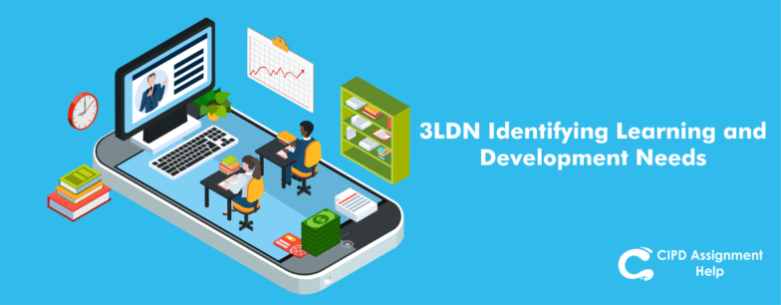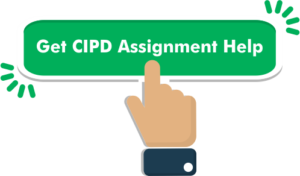Identifying Learning and Development Needs

Description of the LDN guide
Identifying Learning and Development needs is a very important aspect especially because of the changing working environment. This is the reason why CIPD sought to include the unit in order to help the students learn their roles in improving their skills and knowledge. The HR practitioners identify learning needs to be beneficial to the individuals, teams, and the organisations, and thus they have to take an approach to ensure that they identify the learning and development needs in whole to ensure that the individual, team, and organisational goals and objectives are accomplished. With the help of the L&D practitioners, the employees in an organisation get to identify with what they consider important in their learning needs, and this is provided to them to enhance improvement in learning.
First in order to identify the learning needs, the reasons why learning needs arise for different individuals are identified. People want to engage in the learning process for different reasons, and identifying these reasons is the most important step to ensuring that the individuals receive the support they need from the L&D practitioners. Therefore, the students taking the unit are expected to relate with this and identify the reasons why they for instance want to become part of the CIPD programmes. This is important because the students become aware of the reasons why they would want to be learners, and in the process get to identify with this as a need that has to be met for them to be successful.
Reasons why learning needs arise
Individual learning needs arise for persons who want to add skills or acquire new skills for a particular job position in the organisation. Most of the employees find themselves in positions where they are expected to carry out different roles, to which they have no skills or knowledge to do so. This is a situation where learning needs arise, and the employees consider taking new form of training to gain the knowledge and skills required to complete those roles. This significantly impacts career and professional growth and development for the employee. However for further progression of the employees’ careers, they can to engage in continuous learning, which is considered to be the basis to which improvement is enhanced for the individual employees (Choy and Chua, 2019). There are situations when new positions in the workplace require complete new skills, and these results to the development of the learning needs for the employees expected to carry out the roles. The employees should not engage in learning for the sake of it, but should rather have a reason why they want to learn, which is to gain skills that will help them in completing their tasks.
Groups learning needs arise for purposes of ensuring that the members of the group get the knowledge and the skills needed to carry out the tasks assigned to them in the group. This means that task assignments determine the learning needs of the group members, which facilitate how well the groups would be able to meet the group objectives. Groups also engage in learning for purposes of recording improved performance. Students taking this course should learn the learning needs in different settings within the organisation, and how they impact organisational success.
Benefits of learning
The unit is the source of knowledge on the benefits that learning brings to them as individuals, to groups, and the benefits to the organisation. For the students who are for instance taking the CIPD programme, they benefit because they gain employability skills, and would be considered for employment as opposed to students who have not completed CIPD. Through the process, learners acquire skills and knowledge that help them become prepared for employment and carrying out their roles. Learning increases the competency levels of the learners, and in the process, they are able to strategies on the steps they should take to grow in their skills. For the organisations, they benefit from creating a learning culture as the levels of productivity and performance are improved. Learners also become more flexible and responsible when they engage in learning. They get to change their attitudes and approaches, and the skills gained help employees gain their professionalism
Information to be collected to carry out learning needs analysis
Information related to the current skills of the learners should be collected by the L&D experts to ensure that they identify the learning gaps, and at the same time find out what skills are lacking to enhance completion of the assigned roles. This information is effective as it helps the experts identify the materials needed to facilitate the learning process and ensure that the learners gain the knowledge and skills needed. The other needed information is the learning goals of the learners, what they want to learn and achieve as individuals and in groups. The students pursuing the unit should be ready to collect the information on the learning needs from their fellow employees and learners, and assess the skills needed to ensure that the earning process becomes successful. In addition, learners have to ensure that data is positively used to gain the most important benefits to them, and to the other students pursuing the course. Carrying out an exercise on identifying learning needs of other students is an important contribution in determining how the students learn to assess the learning needs and their significance in promoting improved learning within organisations.
Learning outcomes
By the end of the unit, students should;
- Be able to understand how the individual and organisational learning needs arise, and the reasons why they should be aware of those learning needs
- Identify and prioritise their learning needs depending on their career purposes
- Be able to collect information needed in carrying out the learning needs analysis
Winding up;
Different learning needs arise for different learners as individuals, in groups, and in the organisation where they work in. the learning needs help arise because the learners to improve in their knowledge and skills required in carrying out their roles. Students learn the importance of learning needs and how to identify them. The students pursuing the course are those who have an interest in progressing in their profession in HR. They acquire the knowledge needed to identify gaps in learning, and in the process come up with knowledge on how to effectively fill the gaps in order to gain competence. The HR professionals taking this unit get to benefit highly from the information received in this unit, and this facilitates improvement in the manner in which learning is promoted.
References
Choy, W. K., & Chua, P. M. (2019). Professional development. In School leadership and educational change in Singapore (pp. 69-86). Springer, Cham.




